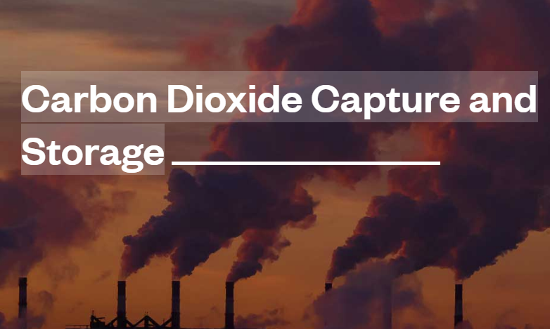Most energy and fossil fuel companies have been reluctant to put significant money behind carbon capture and sequestration (CCS) projects. But with the U.S. passing the Inflation Reduction Act, CCS is moving to the forefront in the effort to mitigate climate change.
What is CCS? It is the capture and storage of carbon dioxide (CO2 ) through a process that separates the gas from industrial and energy-related sources and transports it to a location for long-term storage so that it is permanently removed from the atmosphere.
CCS projects have been on the increase very recently. This year Occidental Petroleum in partnership with Carbon Engineering, a direct-air capture CO2 technology announced plans to build and deploy between 70 and 135 carbon capture plants each with the capacity to capture a megaton of the greenhouse gas annually.
Projected growth in planned carbon capture projects and operations grew in the past year from 169 million tons per annum (MTPA) to 244 MTPA with 30 facilities currently operating, 11 under construction, and 153 planned.
Jarad Daniels, CEO of the Global CCS Institute, believes this is only the beginning of an accelerating rate of investment in projects aimed at drawing down carbon dioxide (CO2) from the atmosphere. He sees CCS as the Swiss Army knife of climate mitigation. “It will continue to play multiple, unique roles in decarbonizing the global economy. Many essential industries like cement and chemical production have no viable path for deep decarbonization other than CCS.”
Although this statement shows a bias in favour of CCS, cement and chemical products are developing new zero-emission electricity and green hydrogen manufacturing processes that would eliminate the need. There is no doubt, however, that for the fossil fuel industry to continue to produce its products, CCS is likely its only way out.
The U.S. isn’t the only government that is turning to CCS as what is in effect a geoengineering mitigation strategy. Its Inflation Reduction Act provides tax credits to increase deployment thirteenfold between now and 2030. The goal is to sequester 110 MTPAs by that date.
Other governments include:
- Canada has recently introduced a CCS tax credit in this year’s budget.
- Denmark has budgeted €5 billion over the next decade.
- The Netherlands has put €13 billion into CCS subsidies.
- Poland, Bulgaria, and Finland have all recently introduced CCS to encourage domestic projects.
- Thailand announced its first CCS project.
- China has its first million-ton project in operation.
- Australia has announced new projects in three of its states and the Northern Territory.
- The Middle East and North Africa are also budgeting for CCS.
All of these governments are offering public money to foster CCS projects that will be partially funded with private capital. This is an old and failed financial model that in the past has seen governments throw money at companies only to see them pull out claiming the technology was too expensive to implement.
But there is an increasing sense of urgency to make policies and announcements in the run-up to COP 27 which begins in a few weeks with Egypt as the host country.
But for CCS to be impactful, the numbers described here are far too low. Why? Because an inventory of industrial CO2 emitters summarized in the most recent IPCC report on CCS states there are 7,887 sites around the world emitting 13.466 billion tons of CO2 around the planet today. These include power providers, cement companies, petrochemical and other refineries, iron and steel manufacturers, and oil and gas processing sites. Getting to net zero to keep atmospheric warming to no more than 1.5 Celsius (2.7 Fahrenheit) requires that all these locations capture emissions through CCS add-ons, or by redesigning manufacturing processes. It means finding the pore space which I wrote about a couple of weeks ago. And it means building or commandeering existing pipelines to repurpose them for transporting CO2 to these pore spaces. We are talking tens of trillions of dollars that will have to be spent to fulfil the Swiss army knife prediction Jarad Daniels earlier described.
















